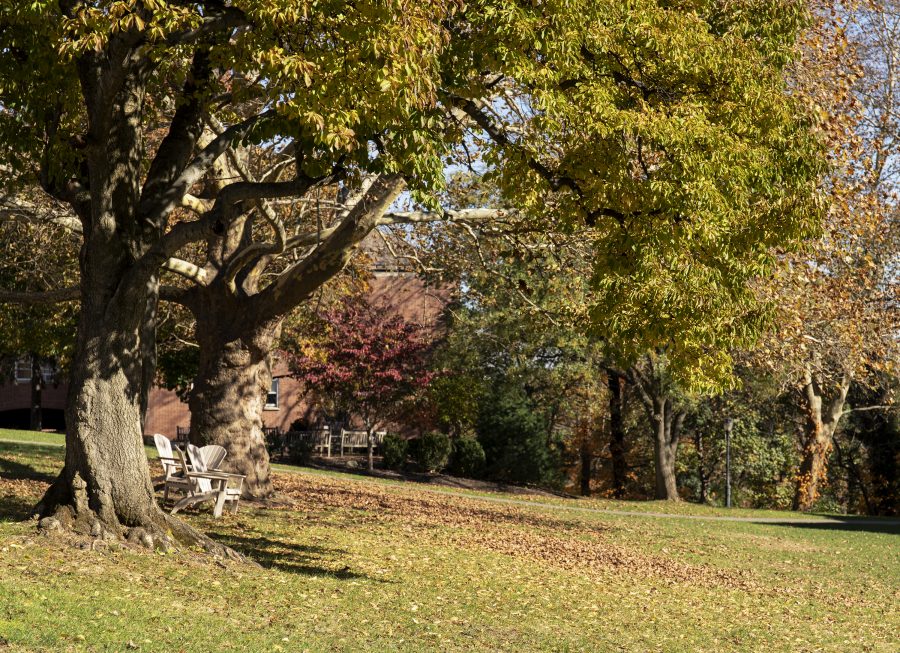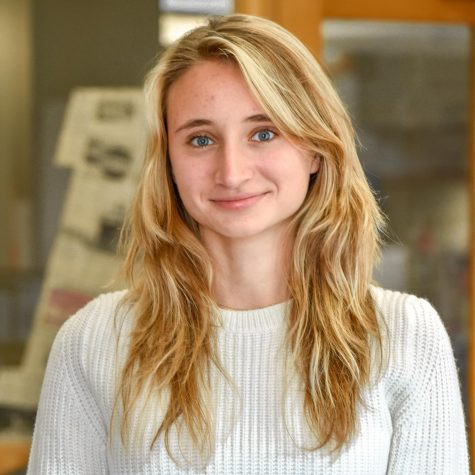Marie Fechik-Kirk, former Director of Sustainability, left her position at Lafayette College a few weeks ago, after arriving at Lafayette in November 2016. She said she worked to bring all facets of the college together, from the custodial staff to the board of trustees, to improve sustainability on campus as a whole.
Nick DeSalvo, the Campus Energy Manager and interim director, explained that the Office of Sustainability is currently conducting a search for a new sustainability director, and expects to have a replacement this summer. Fechik-Kirk took a position as Manager of Sustainability and Special Projects at Northeast Ohio Regional Sewer District. The job’s location puts her closer to her family, she said.
“[Fechik-Kirk] left a transition plan that laid out a lot of detail…[of] what needed to be done. That combined with past experience, we’ll be fine,” DeSalvo said. “Before I was more focused just on energy, and now I’m trying to understand the broader range of things that the office does.
The Office of Sustainability is busy working on a variety of projects, including getting started on some of the initial projects in the Climate Action Plan 2.0, passed by the board of Trustees on Feb. 23, which aims for net zero carbon emissions by 2035.
The office is currently home to DeSalvo, Assistant Director of Food and Farm Lisa Miskelly and Sustainability Fellow Kendall Roberson. They are each working on a variety of topics, most notably the forthcoming projects brought on by the new Climate Action Plan.
Fechik-Kirk played a major role in bringing the Climate Action Plan to life.
The college had not kept track of its progress on its climate action plan in 2011, and Fechik-Kirk said she worked to make this plan “more transparent” in its goals and progress. Toward that end, she said, Roberson has been ensuring that the sustainability office’s website is up to date, and the college has been uploading their carbon emissions data to Second Nature’s website, a non-profit dedicated to accelerating climate action.
Gaining consensus on the climate action plan, Fechik-Kirk noted, was one of the biggest challenges that presented itself.
“There was a large group of us, so my role was tying information together, making sure that we were making the best decisions for the campus, things that allow us to save money in the future, that would allow us to meet our goal of reaching carbon neutrality by 2035,” said Fechik-Kirk, “[and] that really showed we were making a true effort on campus.”
Fechik-Kirk’s also focused on partnering internally with faculty, facilities, students, and the finance team to draft the Climate Action Plan. Fechik-Kirk added that the college is in a much better place than it was upon her arrival to campus.
“I’m really happy about how things were left, and I hope there’s that legacy of having…direction and everyone working together, faculty staff students, altogether to make a big impact on the climate,” said Fechik-Kirk.
Fechik-Kirk explained that Roberson has worked to make a comprehensive website for the Office of Sustainability which is kept up to date with the current projects, programs and initiatives. This creates transparency and a clear line of communication from the office to campus, alumni, faculty and staff.
“We’ve got more robust program for reporting greenhouse gas emissions, we have an office in place to help provide the resources,” Fechik-Kirk added. “Our EcoRep program is thriving and growing every year and every semester, making better efforts to connect people [and] engage students.”
The EcoReps program began in 2016. They are peer environmental educators who work to encourage students to live sustainably. This is one of the many ways students can get involved with sustainability on campus, mentioned Roberson.
“There are so many opportunities [to get involved] on campus. With research, with classes to take, with what our office is doing, now with the Climate Action Plan and what the implementation will look like for that,” Roberson said.
Roberson adds that the first step of getting involved with sustainability on campus is by reaching out and opening a line of communication with her. She often has students stopping by the office, calling, emailing or even direct messaging her on Instagram.
Miskelly explained that with the new Climate Action Plan there is this sense of sustainability reaching beyond the bounds of their office.
“Faculty have really stepped up to say, ‘we really support you, we really believe in what’s happening and we want to continue to be a part of this.’ That tie is really a strong one for us,” said Miskelly.
Roberson added that since the passing of the new Climate Action Plan there is more energy and enthusiasm on campus for sustainability.
“This is something the whole campus is agreeing on, [something] we have backing for. They’re pushing us in the right direction so there’s more energy…around what we’re doing,” said Roberson. “Some momentum has built us which we hopefully can carry and sustain. There’s been a lot more excitement behind what we are doing.”



























































































































